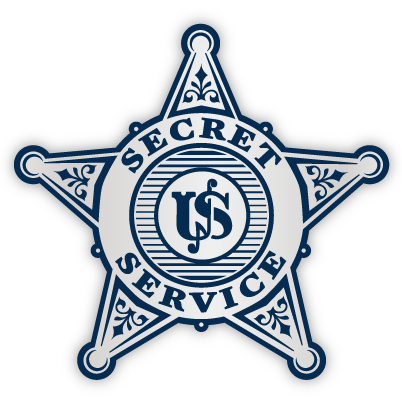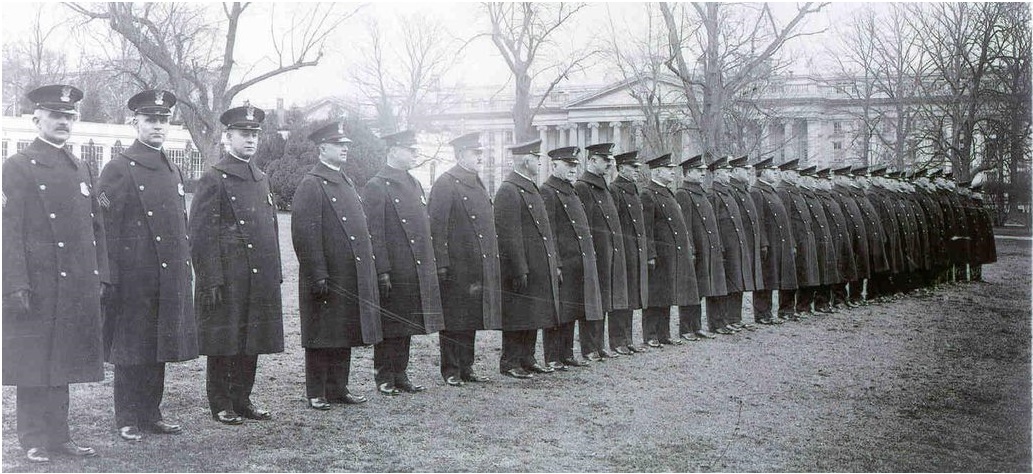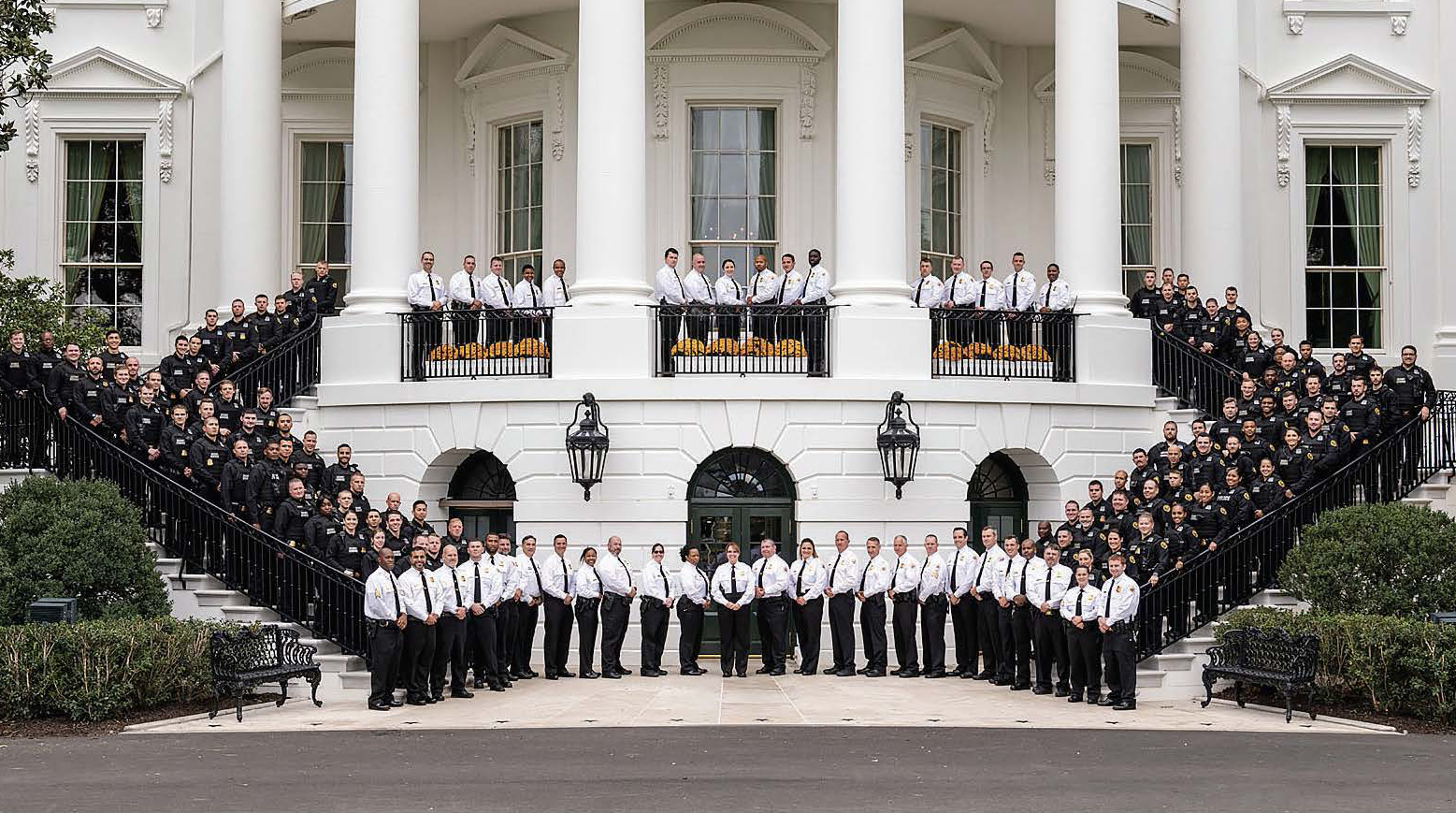Celebrating 100 Years of the Uniformed Division
Today, the U.S. Secret Service celebrates 100 years of the Uniformed Division (UD). On September 14, 1922, President Warren G. Harding created the White House Police Force as a vital effort to safeguard the White House and the elected officials inside its walls.
At its inception, the White House Police Force was made up of elite candidates from the Metropolitan Police Department and U.S. Park Police and fell under the direct control of the President.
In 1930, the White House Police and the U.S. Secret Service joined forces under the direction of President Herbert Hoover. Since 1930, the Secret Service has facilitated seamless physical security surrounding the nation’s highest elected officials and the White House. In 1970, protecting foreign diplomatic missions was added to the force’s responsibilities, and the name was changed to the Executive Protective Service. The name United States Secret Service Uniformed Division was adopted in 1977.
“We are a dynamic Force and the range of our responsibilities has evolved to meet the challenges of a complex and shifting threat landscape. Protecting the many foreign missions and embassies based in Washington, DC, is a prime example of that evolution,” said Uniformed Division Chief Alfonso Dyson. “Our initial mandate to guard the buildings that compose the White House Complex itself did not envision the need to police the city streets, busy neighborhoods or residential communities around the White House and throughout the city.”
Since 1930, the Secret Service has facilitated seamless physical security surrounding the United States’ highest elected officials and the White House. Today, the Uniformed Division has grown to be one of the most robust and respected security forces in the world, with expertise not only in the most effective methods of physical protection, but also in risk assessment and mitigation tactics.
The Uniformed Division has evolved into a team of highly trained professionals who protect and patrol locations in the nation’s capital and travel across the world to secure facilities and venues for U.S. Secret Service protectees. There are also several special operations teams operated by the Uniformed Division, including the Emergency Response Team, Explosive Detection Canines, Personal Screening Canine – Open Area Team, counter Sniper Team, Crime Scene Search Unit, Trek Team, Motorcade Support Unit, Magnetometer Support Team and Patrol Unit.
“Behind the shield of every Uniformed Division officer is a highly trained public servant dedicated to honoring the oath we all swore the day we were commissioned. We are forged, women and men, as links in an unbroken chain of law enforcement excellence that is as vital today as it was a century ago,” said U.S. Secret Service Deputy Director Faron Paramore.
Learn more about the Secret Service Uniformed Division on our website and follow #UD100 on social media.
Emergency Response Team
In conjunction with the upcoming 100th anniversary of the Uniformed Division on October 1, 2022, the Office of Communication and Media Relations will be highlighting various sections within UD.
The Emergency Response Team (ERT) was established July 14, 1985. The proliferation of terrorist activity, the availability of military-style assault weapons and the high-profile nature of the White House Complex were some of the deciding factors involved in establishing the ERT.
ERT’s initial mission focused on tactical responses to unlawful intrusions and other security-related challenges at the White House Complex. Prior to the unit’s formation, White House officers filled in as necessary in an emergency response role. Within the Complex, the team provides added security for Presidential movements, responds to breaches of security, performs sweeps of the White House grounds and responds to any incident of a suspicious nature.
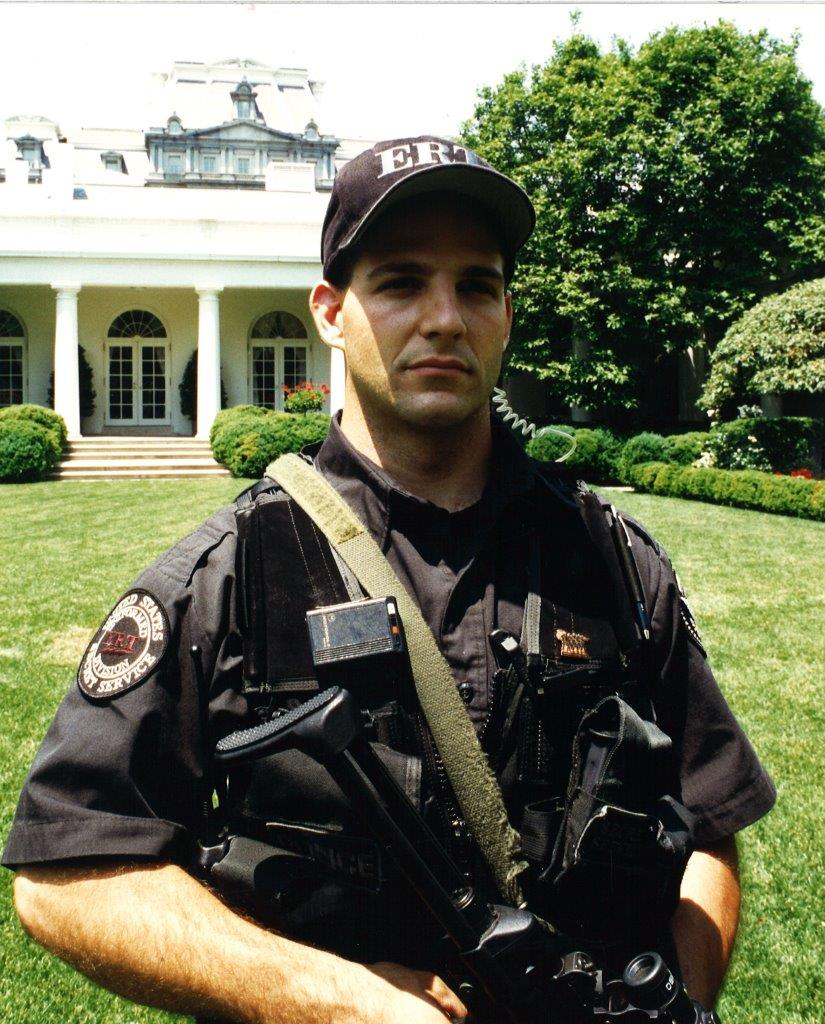
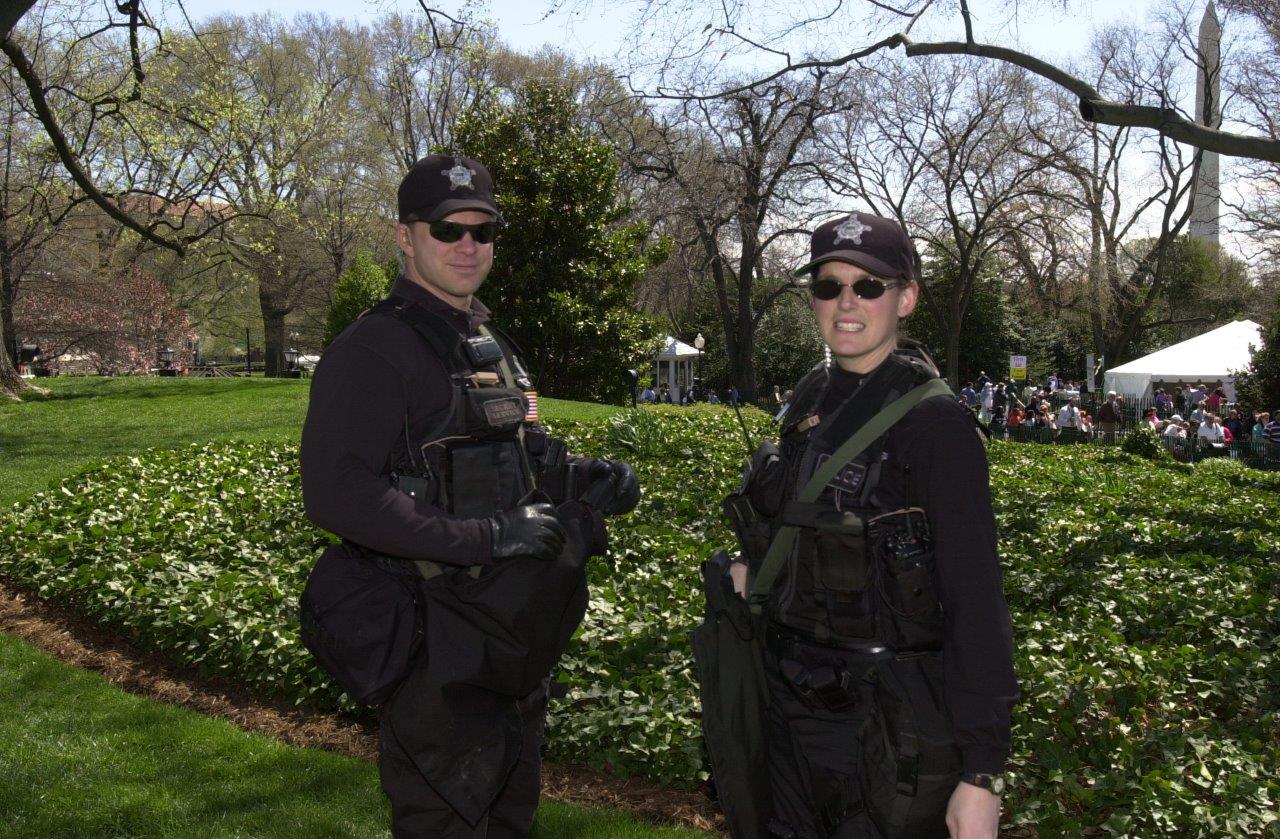
Between July 1992 and August 1998, ERT was under the command of the Uniformed Division’s Administration and Program Support Branch. On August 13, 1998, ERT was relocated under command of the Special Operations Division (SOD) within the Office of Protective Operations (OPO).
In 1994, two significant security incidents at the White House prompted changes in the way ERT personnel train and operate. The two incidents – the Frank Corder plane crash on September 12, 1994, and the October 29, 1994, Francisco Martin Duran shooting – prompted the Treasury department to create the White House Intrusion Review Committee. In April of 1996, the committee recommended that ERT begin specialized tactical weapons training administered by the Special Operations Training section at the Secret Service’s training facility in Beltsville, Maryland.
In ERT’s capacity under SOD, ERT officers conduct security sweeps of the White House grounds, provide additional security coverage for outdoor events and stop infiltration at the perimeter. A tactical squad capable of responding to any crisis, ERT is capable of neutralizing threats by large, organized groups as well as individuals, 24 hours a day, seven days a week.
Special Operations Section
The Special Operations Section (SOS) is a specialized unit of the White House Branch, Presidential Protective Division.
Uniformed Division officers assigned to this group handle myriad of special duties and functions at the White House Complex, including conducting the daily Congressional and public tours of the White House and handling events such as state dinners and official arrival ceremonies for foreign heads of state.
Officers go through an extensive training period before they become SOS certified. They are required to learn the history of the White House and its furnishings from material compiled by the White House Curator’s Office.
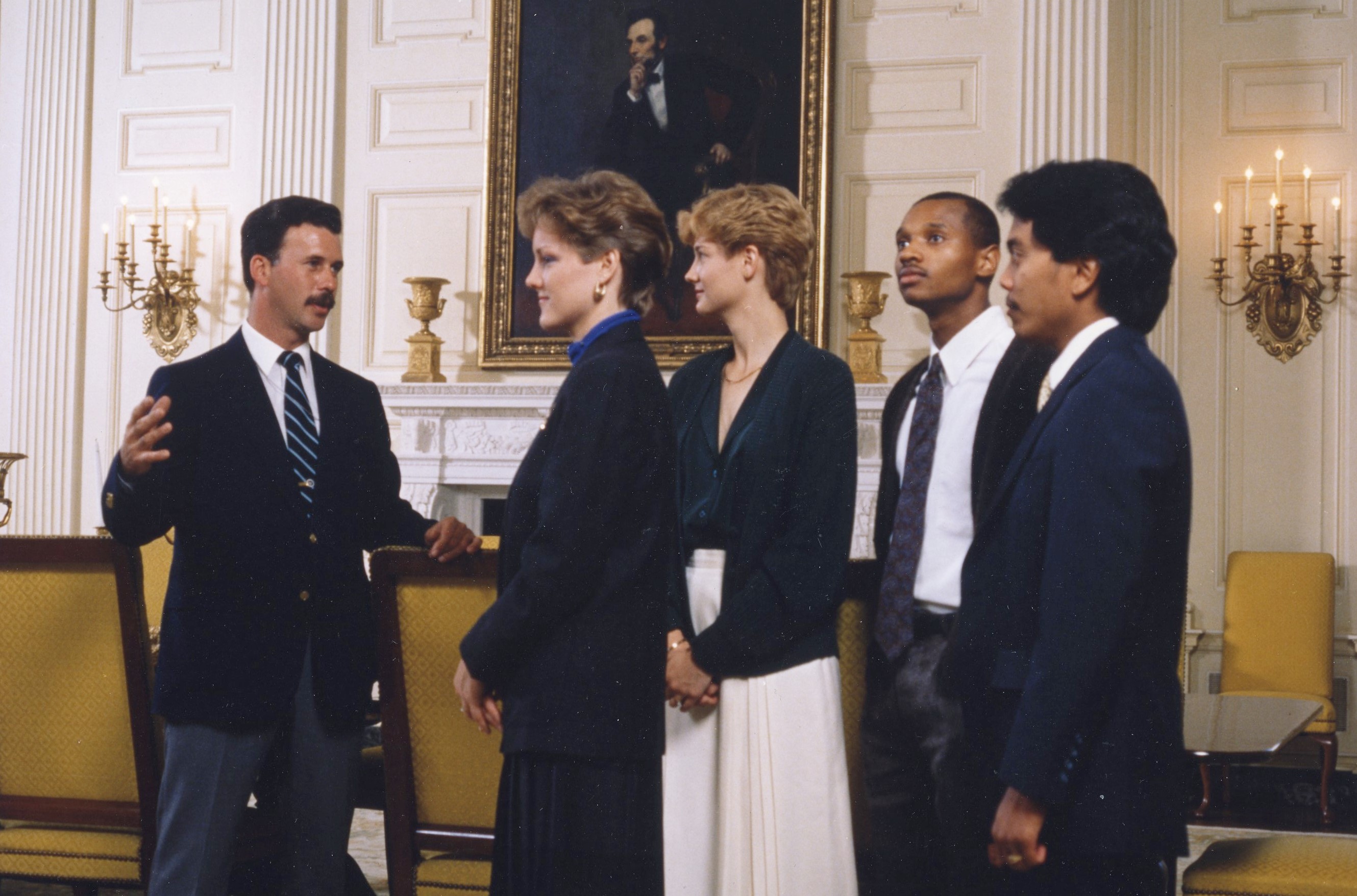
President Harry Truman first requested that guided tours be afforded to visitors as early as 1946. At that time, White House police officers were already functioning minimally in such a capacity, by answering visitors’ questions as they maintained security in the public rooms. SOS was then known as the White House Tour Detail. A small detail was pulled together (just two officers who gave a 7-minute tour) and a program was put in place to combine both tours and security. The initial program has grown considerably over the years and has proved to be remarkably successful.
Today, screening visitors to detect weapons is a very important part of the SOS role since maintaining a secure and safe environment for Secret Service protectees at the White House is paramount. More than one million guests visit the White House annually, including many public officials and celebrities.

